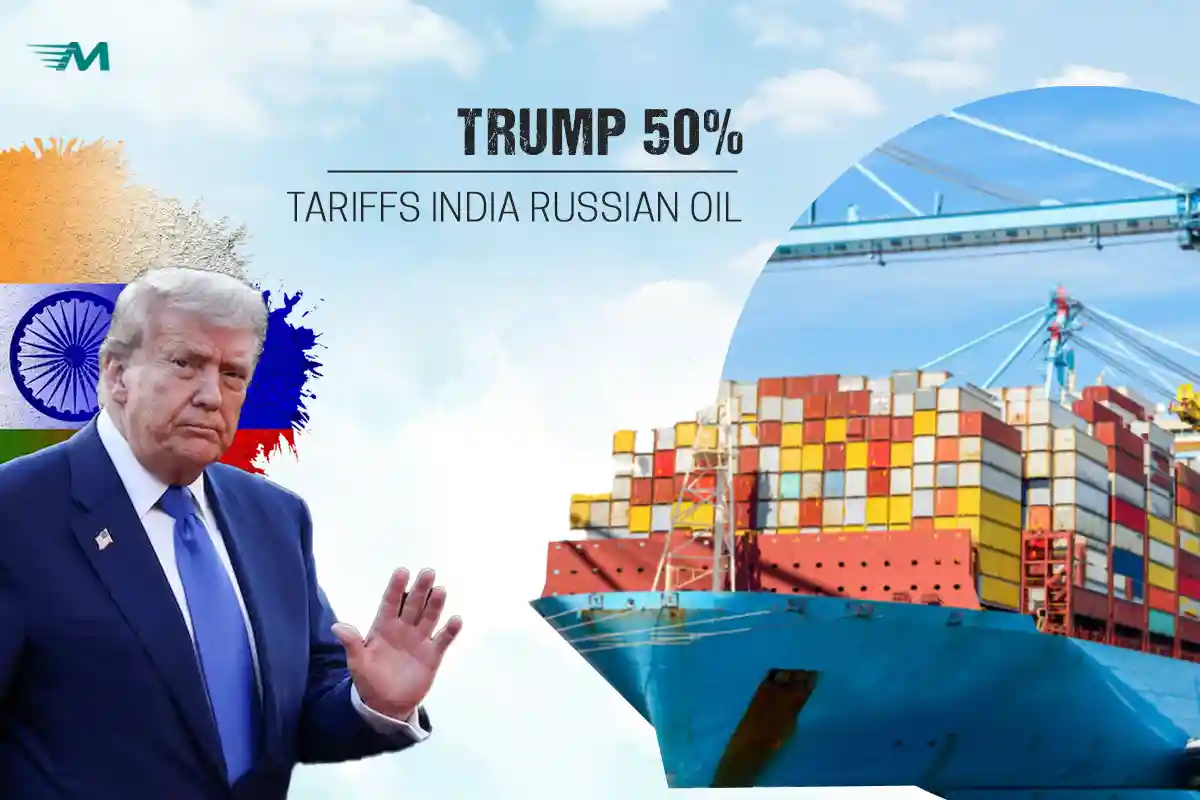Trump 50% Tariffs India Russian Oil: What His Warning to India Really Means
Former U.S. President Donald Trump has once again stirred the global conversation this time, with a bold warning aimed at India. During a recent interview, Trump threatened to impose tariffs as high as 50% on Indian goods if he returns to power in the upcoming 2024 U.S.
presidential elections. His remarks came in response to India’s continued purchase of discounted crude oil from Russia, which Trump sees as undermining U.S. interests. This strong statement highlights concerns around Trump 50% Tariffs India Russian Oil policy direction and raises serious questions about future trade relations, economic impact, and geopolitical balance if Trump is re-elected.
What Did Trump Say?
In the interview, Trump was asked why India is being “singled out” for buying cheap Russian oil while many other countries are doing the same. Trump responded strongly, saying that if India continues such trade practices, he would not hesitate to implement massive tariffs on Indian goods potentially up to 50% as a consequence of India-Russia oil trade ties.
His statement, now widely discussed under the headline Trump 50% Tariffs India Russian Oil, has sparked intense debate over U.S. foreign policy, international trade dynamics, and the future of India–U.S. economic relations. Analysts are closely watching how this potential policy shift might affect global markets, India’s oil diplomacy, and U.S. trade tensions heading into the 2024 elections.
He added that while he doesn’t believe in unnecessary sanctions, he would consider what he termed “secondary sanctions” on countries that continue economic ties with Russia during its ongoing conflict with Ukraine.
His stance clearly positions India in a critical spotlight when it comes to choosing trade partners and maintaining international diplomacy.
Why This Matters: The Background
Since the war in Ukraine began in 2022, Russia has offered oil at discounted prices to several countries, including India and China, due to global sanctions led by the U.S. and the European Union. India, being the third-largest consumer of oil in the world, seized the opportunity to cut its import bills by buying cheaper crude from Russia.
While the U.S. has repeatedly warned its allies about doing business with Russia, India has maintained a neutral stance, stating that its purchases are based on national interests and energy security, not political alignment.
This has created growing tension, particularly with leaders like Trump who believe America is being taken advantage of on the global stage.
India’s Stand on Buying Russian Oil
India has consistently defended its position on buying oil from Russia, stating that it is within its rights to purchase energy from wherever it gets the best deal. Government officials have emphasized that India supports peace and diplomacy but cannot compromise its energy needs and economic stability.
Indian External Affairs Minister S. Jaishankar has also publicly stated in the past that the West should look at its trade volumes with Russia before criticizing India.
Could There Be a Real Trade War?
Trump’s warning brings back memories of the 2018–2019 trade tensions between India and the U.S., when tariffs were imposed and retaliated upon during Trump’s presidency.
If he wins again and follows through with his threats, it could mean:
- Higher tariffs on Indian textiles, steel, and electronics
- Disruption in India–U.S. supply chains
- Reduced access to U.S. markets for Indian businesses
- Potential retaliation by India with its tariffs
This could impact bilateral trade, which currently stands at over $190 billion annually.
The Bigger Picture: U.S. Elections and Global Politics
Trump’s statements should also be viewed in the context of his campaign trail. He has consistently adopted a tough-on-trade and “America First” policy. By targeting India, Trump is likely appealing to conservative voters who are concerned about American jobs and foreign competition.
However, these aggressive policies could harm long-term diplomatic ties with one of America’s strongest allies in Asia.
India is also a key partner in the Quad alliance, which includes Japan, Australia, and the U.S., aimed at countering China’s influence in the Indo-Pacific. Damaging trade ties could indirectly impact military and strategic cooperation as well.
What Experts Say
Trade experts and geopolitical analysts have mixed views:
- Some believe Trump’s comments are more of a campaign tactic and may not materialize into real policy.
- Others warn that even the threat of sanctions or tariffs could hurt investor confidence and weaken diplomatic goodwill.
- Economic advisors note that India has diversified its oil imports and may reduce dependency on Russian crude over time, softening future tensions.
What Could India Do in Response?
India has a few options on the table:
- Continue Diversifying Oil Imports – By reducing reliance on Russian oil, India can lower the risk of geopolitical backlash.
- Strengthen Trade With Europe and Asia-Pacific – Less dependence on the U.S. market can give India more flexibility.
- Engage in Strategic Talks – Proactive diplomacy could help India explain its energy needs and strike a balance between economics and global partnerships.
Conclusion
Donald Trump’s recent statement targeting India over its oil trade with Russia marks a significant moment in global trade diplomacy. Whether or not these threats turn into actual tariffs, the message is loud and clear: trade policies will be a major talking point in the upcoming U.S. elections.
For India, the challenge is maintaining its energy security and sovereign trade decisions while also preserving strong ties with the United States. The months leading up to the U.S. elections will be crucial in determining how this issue unfolds and whether diplomacy will prevail over threats.

